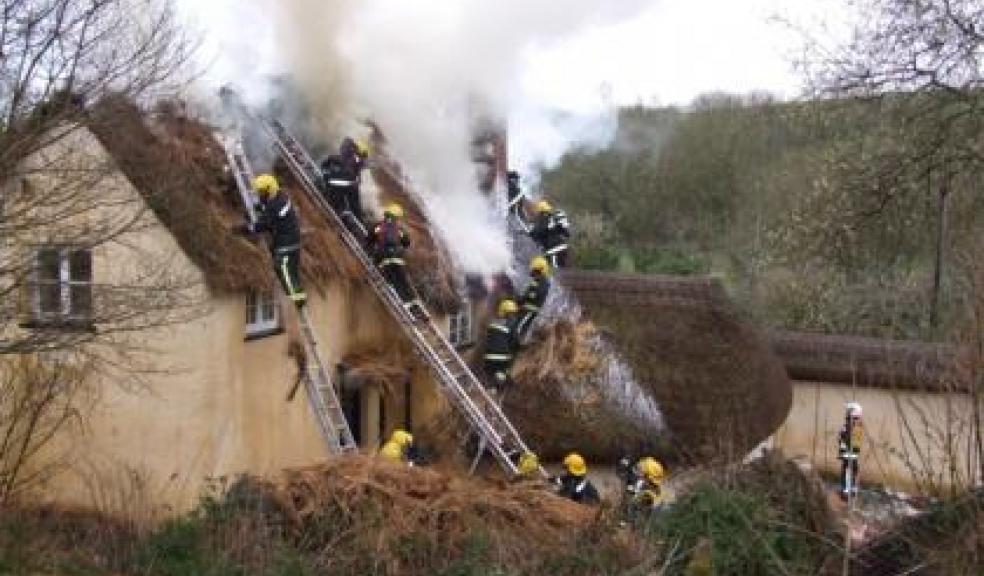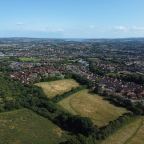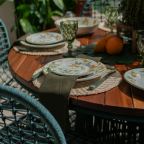
Have you checked you thatch roof is safe?
Devon & Somerset Fire & Rescue Service remind you to make sure your chimneys are safe and clean as possible, especially if you own a thatched property. Last year the fire service attended a total of 26 thatched fires of these, 23 were chimney fires and three were thatch roof fires.
According to English Heritage the number of thatched properties listed in Devon and Somerset is 5,916.
Marc House, Community Safety Prevention Manager said: “Fire in a thatched roof is difficult to detect and once started is difficult to control. Once a fire has taken hold within a roof it will spread rapidly, due to the very nature of how thatch burns; and often the results are devastating!
“To keep yourself and your family safe from fire you should take care to have your chimney swept regularly, depending upon what fuel you burn. If the worst should happen, a smoke alarm can give you the extra time you need to escape in a house fire – make sure you test yours regularly.
Fire in a thatch is not an inevitable occurrence but it is an organic material, subject to different behaviour patterns depending on its surroundings, treatments and choice of materials or styles. It has a finite life span, measured in tens rather than hundreds of years. And above all it is combustible.
Modern enclosed solid fuel appliances are designed to burn efficiently and cleanly, often flues pass through old chimneys, where there is only a four-inch thickness of brick, which makes the thatch especially vulnerable to the risk of heat build-up and eventually combustion at a point between the brick and the thatch.
The danger zone for heat transfer and where a fire may start in a thatch is more associated with older and/or listed properties with any two or more of the conditions highlighted below:
- A deep multi-layer thatch where the thatch is over one metre deep–a guide to the depth of thatch can be assessed in relation to the level of visible chimney
- Originally chimney height would have been about two metres from the ridge.
- Regular use of a multi-fuel or wood burning stove or an open fire with an inappropriate, old or poorly fitted liner
- Central chimney surrounded by thatch or a house that is part of a terrace
- Electrical faults and careless workmen, any recessed halogen spot lights, those particularity in bedroom or bathroom ceilings
- Security Lights - situated too close to the eaves. Any outside lights, particularly those fitted with motion sensors should be installed at least 1 metre away from any thatch
- Discarded cigarettes and garden bonfires
- Television aerials on thatched buildings should be fitted to a freestanding pole. Where this is not possible, the aerial should be fixed to a gable or gable-end chimney, where the cable can be run down the wall, avoiding contact with the thatch. Disconnect your television aerial during electrical storms to prevent damage to the system
Wood burning stoves
The increased efficiency of such stoves, whilst very welcome to residents of otherwise draughty older properties, has its own implications with regard to fire risk.
Such efficiency depends on a high flue gas temperature of around 500°C which is concentrated in a narrow air column. When installed in a properly regulated, modern chimney this type of system is a highly effective way of getting maximum heat out of burning wood; but where ancient chimney stacks are concerned, the inappropriate introduction of such installations, with metal liners can create serious problems.
If the use of such stoves is to be contemplated in an old thatched house, it is essential that a concrete of pumice insulated liner be inserted to isolate the hot gases from the surrounding brickwork.
If in doubt, ask and don’t use any chimney related appliance until you are sure it is safe!
Smoke alarms
Fit working smoke alarms on each floor level in your home. Consider buying an alarm with a ten year battery, otherwise change the battery every year alarm and regularly test your smoke alarm.
For more Thatch information and to download our booklet please visit our webpage . Or The Thatch Advice Centre - www.thatchadvicecentre.co.uk











